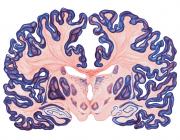Automatic guidance of attention during real-world visual search.
Publication Year
2015
Type
Journal Article
Abstract
Looking for objects in cluttered natural environments is a frequent task in everyday life. This process can be difficult, because the features, locations, and times of appearance of relevant objects often are not known in advance. Thus, a mechanism by which attention is automatically biased toward information that is potentially relevant may be helpful. We tested for such a mechanism across five experiments by engaging participants in real-world visual search and then assessing attentional capture for information that was related to the search set but was otherwise irrelevant. Isolated objects captured attention while preparing to search for objects from the same category embedded in a scene, as revealed by lower detection performance (Experiment 1A). This capture effect was driven by a central processing bottleneck rather than the withdrawal of spatial attention (Experiment 1B), occurred automatically even in a secondary task (Experiment 2A), and reflected enhancement of matching information rather than suppression of nonmatching information (Experiment 2B). Finally, attentional capture extended to objects that were semantically associated with the target category (Experiment 3). We conclude that attention is efficiently drawn towards a wide range of information that may be relevant for an upcoming real-world visual search. This mechanism may be adaptive, allowing us to find information useful for our behavioral goals in the face of uncertainty.
Keywords
Journal
Atten Percept Psychophys
Volume
77
Pages
1881-95
Date Published
08/2015
ISSN Number
1943-393X
Alternate Journal
Atten Percept Psychophys
PMID
25898897

